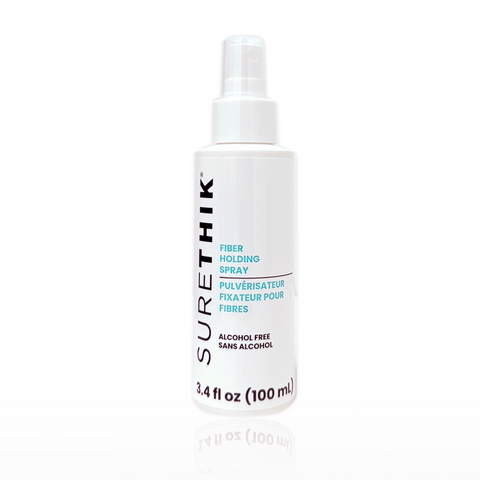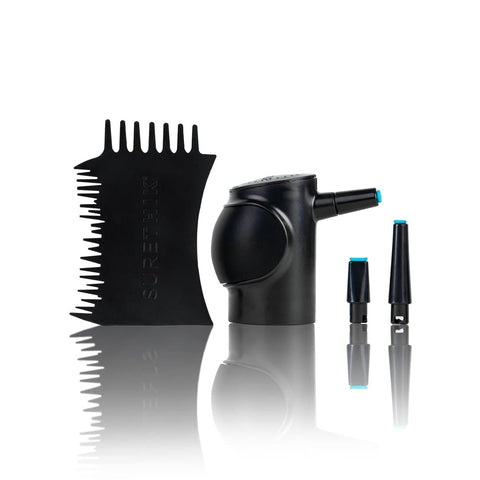
What You Should Know About Hair Loss
Alopecia is a pretty common occurrence. While it is more common in older persons, it can affect anyone, even youngsters. According to the American Academy of Dermatology, it is normal to shed between 50 and 100 hairs every day (AAD). With over 100,000 hairs on your head, the loss is insignificant. Normally, new hair replaces lost hair, however this does not always occur.
Hair loss can occur gradually over time or suddenly. It could be transient or permanent, depending on the underlying cause.

WHAT IS ALOPECIA?
Alopecia areata is an autoimmune illness that causes your hair to fall out, frequently in quarter-sized clumps. The degree of hair loss varies from person to person. Some folks just lose it in a few places. Others suffer significant losses. Hair might grow back but then fall out again. In others, hair regrows permanently.
There are various types of this ailment. The most frequent kind of alopecia areata is the most common, however there are other, more unusual types.
Telogen effluvium:
Telogen effluvium is a term used to describe a common cause of transient hair loss caused by excessive shedding of resting or telogen hair following a shock to the system. The growth of new hair continues. Because of the form of the root, telogen hair is also known as club hair.
Telogen effluvium is a type of abrupt hair loss caused by emotional or physical shock, such as a traumatic event, intense stress, or a major illness.
It can also occur as a result of hormonal changes, such as those seen in:
- Hair is more brittle when wet, so use caution when washing and drying it.
- Menopause
- Postpartum
Anagen Effluvium:
Hair losing that occurs during the anagen or growth stage of the hair cycle is referred to as anagen effluvium. Hair shedding that occurs during the anagen or growth stage of the hair cycle is sometimes referred to as shedding. Telogen effluvium, or hair losing, occurs during the telogen, or resting, stage of the hair cycle. Anagen effluvium is a kind of nonscarring alopecia that is frequently associated with chemotherapy.
Alopecia Areata:
Hair loss is a sensitive subject, but knowledge is power. Learning more about the various types of hair loss will help you better understand your own condition and find appropriate solutions. Alopecia areata is a common autoimmune skin disease that causes hair loss on the scalp, face, and occasionally other regions of the body, according to the NAAF. In fact, it affects up to 6.8 million people in the United States, with a lifetime risk of 2.1 percent.
Androgenetic Alopecia:
Androgenetic alopecia is a type of hair loss that affects both men and women. This disorder is also known as male-pattern baldness in men. Hair falls out in a distinct pattern, beginning above both temples. The trend of hair loss in women differs from that of men. Women's hair thins all over the head, but the hairline does not recede. In women, androgenetic alopecia rarely results in total baldness.
HOW TO TEMPORARILY TREAT HAIR LOSS:
Hair thinning is a normal aspect of aging. Men, in particular, tend to lose their hair more quickly and conspicuously than persons of other genders.
Hair loss is so widespread and natural that we call it androgenetic alopecia, or male pattern baldness.
If you want to cover up thin portions of your hair, we'll go through how to do so below. We'll also talk about how to treat thinning hair naturally, as well as how to improve the look of your hair and boost your confidence as it changes over time.
1. Hair Building Fibers:
Hair Fibers were developed as a quick, simple, and dependable hair loss cure. Each of our products is scientifically designed for men and women who have thinning hair, thinning portion lines, or bald areas on the scalp. SureThik formula includes a portion on sophisticated Hair Fibers Technology. The solution contains powerful electrostatic-charged fibers that adhere to fine hair and simply produce the appearance of fuller hair in seconds. SureThik has worked hard on our hair building fiber technology to ensure that they will not smudge, smear, or clump, as some lower grade hair fibers do.
SureThik takes pride in developing a product that is simple to use. SureThik had the opportunity to work with Lacie Rodriguez, an Androgenic Alopecia Advocate who provides positive reminders of hair confidence to women who are experiencing hair loss. Lacie tells her experience about her alopecia and shows how she uses hair fibers.
"Scalp concealers can be an absolute godsend when your hair starts thinning”
One of my favorites to use is hair fibers because they’re inexpensive and once you get the hang of it, super quick and easy. I also love that they attach to your existing hair to add density instead of just covering up your scalp. I use them to thicken up my hairline even when I’m wearing a topper!"
- Lacie
2. Hair Toppers:
Hair toppers are an excellent way to disguise thinning hair on the top of a woman's scalp. Toppers will rapidly cover those patches and blend with a woman's natural hair, adding volume while offering greater thickness and density as a result, whether they are balding due to female pattern baldness or have thinning hair.
Hair toppers are notable for their ability to incorporate one's own hair into the piece. You'll cause less damage to your own hair! Because a hair topper is the "top layer" of hair on display, it is the most crucial to style, and your own hair underneath can benefit from some TLC as well. You can heat style your topper to your heart's content if it's human hair. They are far more comfortable to wear than wigs. A wig is often slightly heavier on the head than a topper, especially lace toppers, which are so light you may forget you're wearing one.
3. Root Spray:
Hair loss manifests itself in a variety of ways. Androgenetic hair loss, which begins with a receding hairline and frequently progresses to baldness, is common in men. Women's hair, on the other hand, thins all over the head. Root concealers have a negative reputation since most people link them with grey, grown-out, or thinning hair. Root concealers, on the other hand, are a method of creating the illusion of fuller hair. The application of Root Spray is quick and simple.
Hair thinning and loss are both natural occurrences. However, losing your hair can be a distressing event. That's why it's critical to figure out what works best for you to reduce how much thinning hair interrupts your life, whether it's a new style, a new look, or simply accepting your new look as part of who you are.





